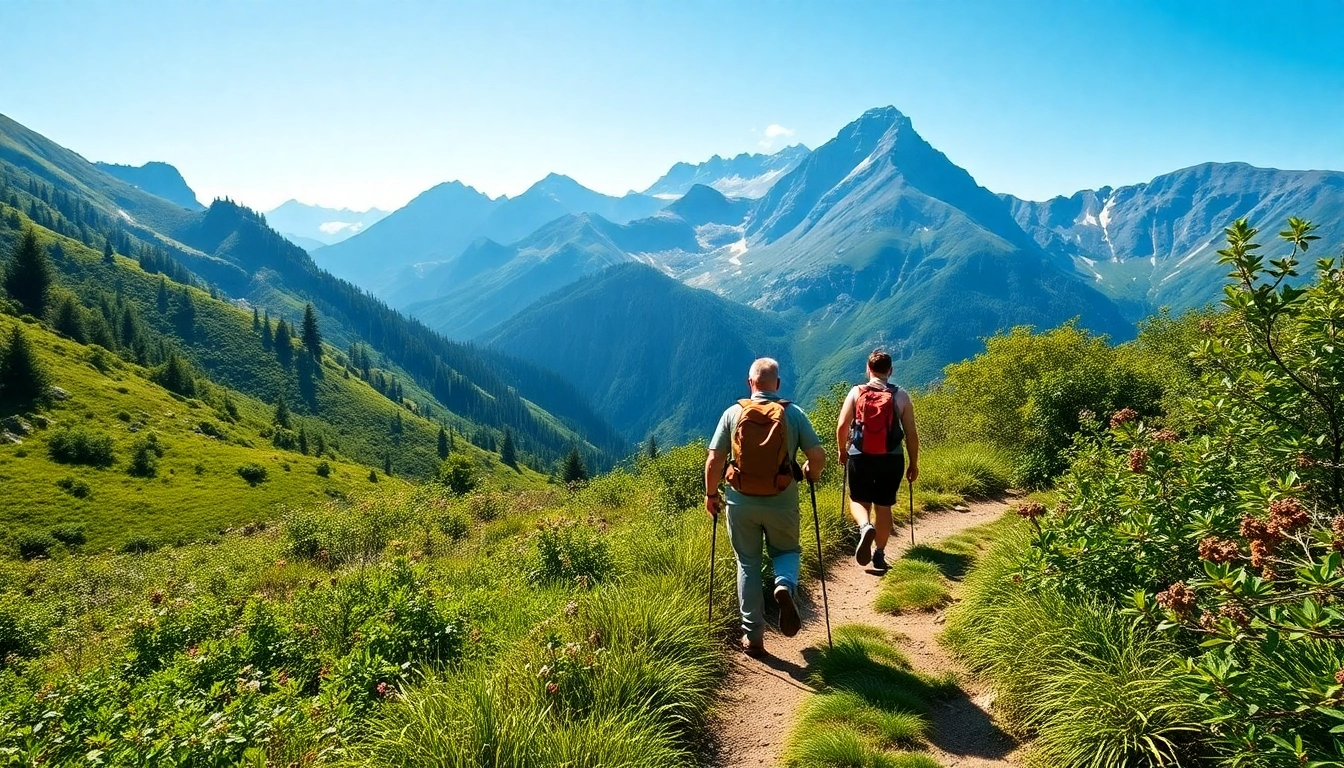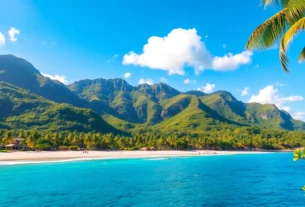Understanding Hiking: Definitions and Key Concepts
What Is Hiking? Basic Definitions and Origins
Hiking is a popular outdoor activity that involves long, vigorous walks, typically along designated trails or footpaths in natural environments. Its roots trace back centuries in Europe, where people regularly traversed rural and wilderness areas for recreation, travel, or religious pilgrimages. Today, hiking is recognized worldwide as a sport, a form of recreation, and an essential component of outdoor adventure. It promotes physical fitness, mental wellbeing, and a profound connection with nature.
hiking in Indonesia, especially in regions like Lombok, offers unique opportunities to explore diverse landscapes, including mountains, forests, and coastal scenery. The activity is inclusive and accessible—it requires minimal equipment and can be tailored to fit various fitness levels.
Differences Between Hiking, Trekking, and Walking
While these terms are sometimes used interchangeably, they refer to distinct activities with specific characteristics:
- Hiking: A moderate to vigorous walk along trails or footpaths, usually in rural or mountainous settings. It is generally a day activity that emphasizes enjoying scenery and physical activity. For example, a day hike in Lombok’s Rinjani National Park allows visitors to admire volcanic landscapes and lush greenery.
- Trekking: Often involves multi-day trips through more remote, rugged terrains, requiring better preparation and gear. Trekkers typically carry their own supplies and camp overnight. Trekking in Indonesia might include multi-day adventures across the highlands or through jungle paths.
- Walking: The most basic activity, usually on flat and maintained surfaces like city sidewalks or park paths. It’s less strenuous and usually for leisure or commuting.
History and Popularity of Hiking in Indonesia
Indonesia’s vast archipelago boasts a rich tradition of outdoor exploration. The natural beauty of places like Lombok, Bali, Flores, and Sumatra has made hiking a popular activity among locals and tourists alike. The ascent of Mount Rinjani, Indonesia’s second-highest volcano, is one of the country’s most famous hikes, drawing thousands each year for its challenging trail and breathtaking views. Over the years, hiking has evolved from a recreational pastime to a significant aspect of eco-tourism and adventure travel in Indonesia, promoting both health benefits and environmental awareness.
Preparing for a Successful Hike in Indonesia
Choosing the Right Hiking Gear and Equipment
Proper gear is essential to ensure safety, comfort, and an enjoyable experience. In Indonesia’s diverse terrains—ranging from volcanic slopes to dense forests—hikers need gear suited to varying conditions:
- Footwear: Invest in high-quality, waterproof hiking boots with good ankle support. Consider trail-specific shoes with non-slip soles for rocky or muddy terrains.
- Clothing: Wear moisture-wicking, layered clothing. Include lightweight waterproof jackets and thermal layers for higher elevations.
- Backpack: Choose ergonomic backpacks with sufficient capacity for essentials, including water, snacks, and safety gear.
- Navigation Tools: Carry maps, GPS devices, or smartphone apps with offline maps for route planning.
- Safety Equipment: Include first-aid kits, whistle, headlamp, multi-tools, and sun protection.
Planning Routes and Safety Considerations
Advanced planning is vital, especially when venturing into remote areas or high-altitude regions. Study trail maps, check weather forecasts, and inform someone about your itinerary. Popular trails like those on Mount Rinjani or in the Senggigi region offer marked paths, but always be mindful of terrain difficulty and your own fitness level. Safety precautions include:
- Assessing trail difficulty and your physical readiness.
- Preparing for sudden weather changes—Indonesia’s tropical climate can bring quick rain or storms.
- Carrying sufficient water and nutrition to prevent dehydration and fatigue.
- Understanding local wildlife and terrain hazards.
- Respecting local regulations and cultural norms to foster sustainable tourism.
Physical and Mental Preparation Tips
Engaging in regular cardiovascular activities like jogging or cycling enhances stamina. Strength training focusing on legs, core, and balance supports trail navigation. Mentally, visualization and mindfulness exercises boost confidence and resilience. Preparing for altitude acclimatization, especially on challenging climbs, involves gradual exposure and proper hydration. Familiarize yourself with basic first aid and emergency response procedures to handle unforeseen situations confidently.
Best Hiking Destinations in Lombok and Surroundings
Popular Trails and Scenic Spots in Lombok
Lombok is a haven for hikers, renowned for its stunning volcanoes, rich cultural heritage, and pristine beaches. Mount Rinjani, Indonesia’s second-highest peak at 3,726 meters, offers a challenging trek for experienced hikers. The summit provides spectacular views of the surrounding islands, crater lakes, and waterfalls. Other scenic spots include:
- Benang Stokel and Benang Kelambu Waterfalls: Accessible for less experienced hikers seeking lush rainforest scenery.
- Senggigi and Gili Islands: For leisurely walks along beaches and exploring local culture.
Unique Features of Indonesian Hiking Trails
Indonesia’s trails typically feature a mix of volcanic landscapes, tropical rainforests, and cultural landmarks. The presence of active volcanoes offers dramatic scenery and geothermally heated areas. Trails often pass through traditional villages, offering insights into local customs and interactions with indigenous communities.
Hidden Gems for Hiking Enthusiasts
Beyond the popular routes, Indonesia offers numerous lesser-known trails such as:
- Climbing Gunung Ropo in Sumba for untouched wilderness.
- Exploring Mount Tambora’s crater in Sumbawa, an area less crowded but breathtaking in scenery.
- Secret jungle trails in Toba Lake that reveal secluded waterfalls and indigenous settlements.
These hidden gems provide authentic and less commercialized hiking experiences for avid explorers.
Hiking Benefits for Your Health and Wellbeing
Physical Health Improvements from Regular Hiking
Consistent hiking enhances cardiovascular health, strengthens muscles, and improves endurance. It aids in weight management and boosts immune function. Studies have shown that regular outdoor activity reduces the risk of chronic diseases such as hypertension, diabetes, and obesity. In Indonesia, where outdoor air quality varies, choosing hiking locations with cleaner air can amplify these health benefits.
Mental Health and Stress Relief Benefits
Engaging with nature has proven mental health benefits, including reduced anxiety, depression, and improved mood. The tranquility of natural settings encourages mindfulness and offers a break from urban chaos. The act of disconnecting from devices and immersing in scenic landscapes fosters mental clarity, emotional resilience, and a sense of achievement.
Environmental Awareness and Conservation Efforts
Responsible hiking promotes environmental stewardship. By practicing Leave No Trace principles, hikers help preserve fragile ecosystems, prevent erosion, and protect wildlife habitats. Many trail organizations and local communities in Indonesia actively engage hikers in conservation programs, emphasizing eco-friendly practices and sustainable tourism.
Enhancing Your Hiking Skills and Experience
Tips for Beginners to Advanced Hikers
Beginners should start with manageable trails, gradually increasing difficulty as skills improve. Essential tips include:
- Learning how to use navigation tools effectively.
- Practicing proper pacing and hydration.
- Carrying lightweight, efficient gear.
For advanced hikers, focus on mastering multi-day trek planning, high-altitude hiking techniques, and self-sufficiency in remote areas. Joining local hiking clubs or guided tours provides valuable experience and safety support.
Incorporating Local Cultures and Nature Ethics
Respect for local cultures involves engaging with communities respectfully, learning about their traditions, and supporting local economies. Embracing ‘Leave No Trace’ principles minimizes environmental impact—pack out all trash, stay on defined paths, and avoid disturbing wildlife or cultural sites.
Leveraging Technology and Apps for Better Hikes
Modern technology enhances safety and trip planning. GPS apps like Gaia GPS, Maps.me, or Trailforks assist with navigation. Weather apps prepare hikers for changing conditions, while social platforms or community forums provide trail reviews and advisories. Using drone photography can also document your adventure without intruding on pristine environments.

